Many of us use popular social networks like Facebook, Twitter and LinkedIn. Yet there are hundreds of others, most of which you likely have never heard of.
Some of these lesser known digital outposts are worth discussing, however. Over the past few weeks I have reported on three: StumbleUpon, Delicious and Google+. In this article I list five others, each of which faciliates the aggregating and organizing of existing content — i.e. “curating” — and social sharing.
The importance of content curation cannot be understated. Today, we are inundated with information that’s vying for what has become an increasingly scarce commodity: our attention. Those individuals or businesses that serve as curator, filtering out all but the best, most relevant content will benefit from increased social capital and, therefore, attention. The following sites provide a means to accomplish that curating function.
1. Start Your Own Online ‘Newspaper’
Paper.li is a content curation service that enables people to publish an online “newspaper” based on topics of interest to them or the community they seek to influence. The social tie-in is that readers can share the paper with friends and followers.
What works for individuals can also work for businesses. For example, a number of ecommerce merchants have started their own aggregation sites — searching “ecommerce” with “news” at Paper.li produces this list. Here are a few examples from Practical eCommerce readers and contributors.
E-commerce Morning News by Travis Ebel
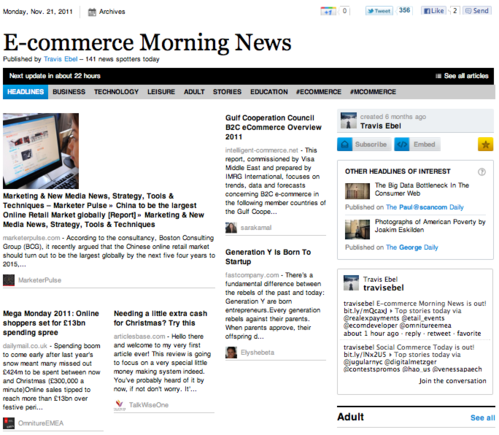
Paper.li allows anyone to aggregate content, what is calls an online “newspaper.”
—
#eCommerce Daily News by Sarah Spagnudo
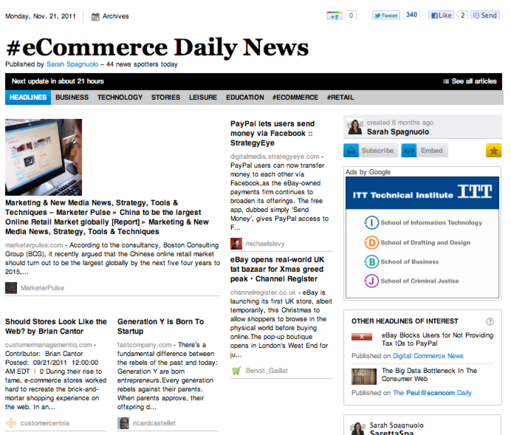
Sarah Spagnuolo’s paper shares news of interest to ecommerce merchants.
—
Ecom Experts Daily by Shawna Seigel
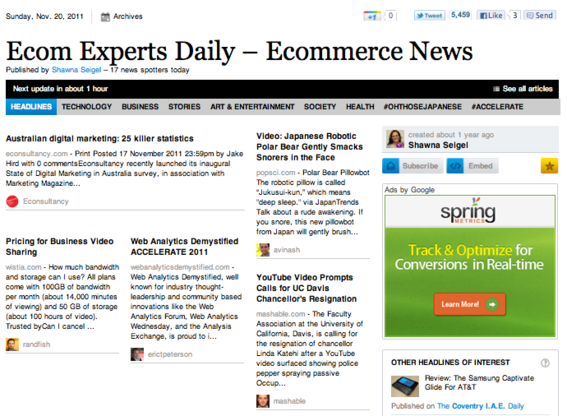
Shawna Seigel, a Yahoo! developer, curates ecommerce industry news.
Paper.li draws content from the following social networks: Twitter, Facebook and Google+. It can also aggregate content from RSS feeds.
Setting up a “paper” requires little effort.
- Decide on a topic.
- Login using your Twitter or Facebook account.
- Give your paper a name.
- Pull in content from the aforementioned networks, use RSS feeds or a combination of both.
- Select a language. Paper.li supports English, German, French, Spanish, Japanese, Dutch and Portuguese.
- Choose a list of categories to which you will assign content.
- Publish.
The paper can be published daily, two times a day — morning and evening — or weekly, and it can be syndicated via Twitter, Facebook and email. You can also embed the paper on your website or blog.
Currently, Small Rivers — the company that created Paper.li — runs display advertising on each paper. Plans are in the works to enable paper owners to replace such advertising with their own.
2. Share News of Interest with Your Community

Digg allows community members to rate content.
Digg is a social network for sharing content with a community of followers who can then rate the value of the content through “Diggs.” Highly rated content gets moved up, enabling it to receive more views and, as a result, more clicks-throughs.
While it shares some of the same attributes as StumbleUpon, my own experience with Digg is that it delivers much less traffic, perhaps because category options are very general, even generic.
For example, there is no category for ecommerce. Everything related to the topic has to fall under either “business” or “technology.” A greater diversification of posting categories would doubtless improve the site’s relevance as a tool for social sharing.
3. Put a ‘Sphinn’ on the News
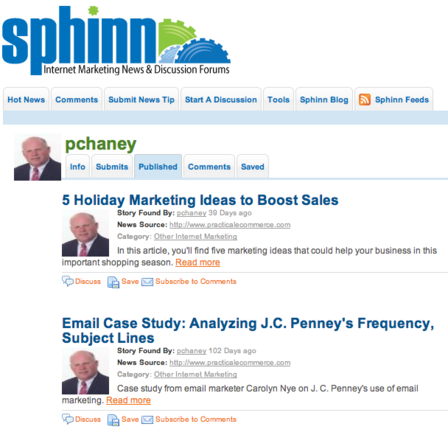
Sphinn focuses on news for online marketers.
Sphinn is a content aggregation site similar to Digg. But Sphinn is designed for sharing news of interest to online marketers. Unlike Digg, which relies on users to rate content, Sphinn uses a team of editors to decide the most important articles to feature each day.
Its editorial staff presumably tries to ensure that content is on-target, non-promotional and free from spam, a problem that has plagued Digg and other social sharing sites.
4. Content Sharing Especially for Bloggers

Technorati is a well-known blog directory.
Technorati is a blog search engine and directory that indexes content from more than a million blogs.
Founded in 2002, Technorati’s heyday pre-dates the advent of social networks like Facebook and Twitter. Recently, however, the site expanded to a media company, providing advertising and other services to blogs and social media sites.
To be included in Technorati’s directory, bloggers must set up an account and submit the blog’s URL.
5. Do It Yourself Version of Digg
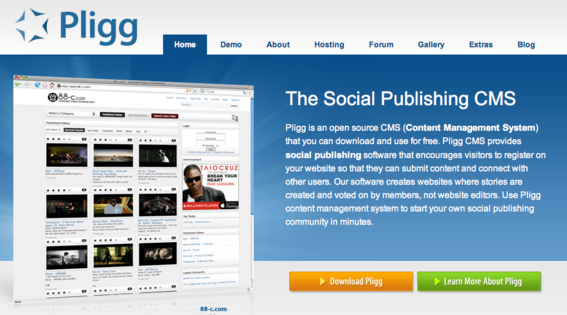
Pligg is a do it yourself version of Digg.
Pligg is a content management system designed to allow anyone to create his or her own version of Digg. It was created by third-party developers and has no relationship to Digg other than the fact it mirrors its functionality.
Pligg can be downloaded to a server and comes with a variety of default templates. Some technical expertise is required to make full use of the platform, however.
Here are some sample sites built using Pligg.
Small Business Trends Business Book Awards

Small Business Trends uses Pligg to showcase its book awards.
—
BizSugar
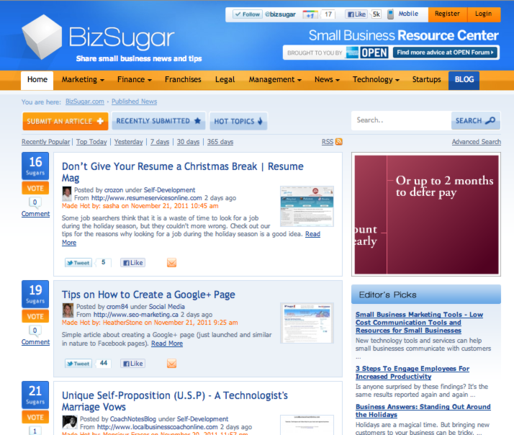
BizSugar aggregates news of interest to small business.
—
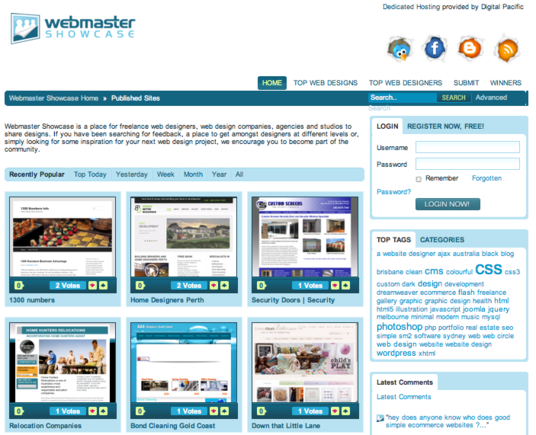
Webmaster Showcase allows freelance web designers to share designs.



